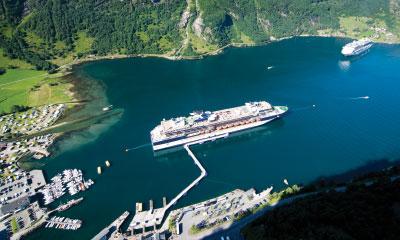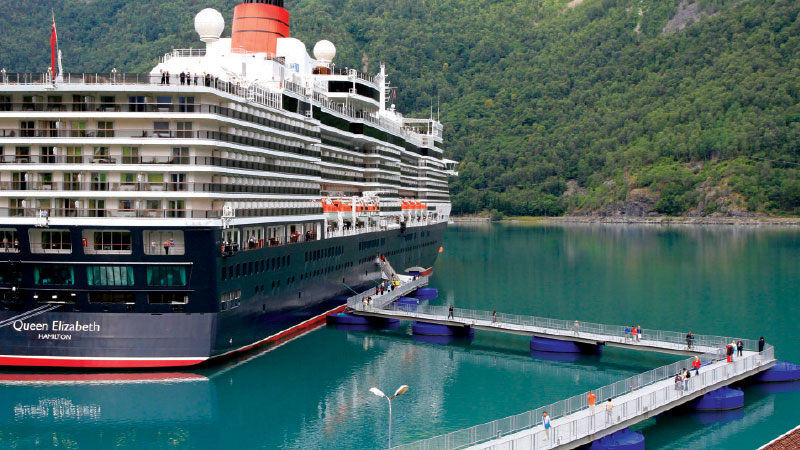By Mike Jarrett
… includes region’s first floating cruise pier
Jamaica has moved forward on a number of projects to develop and expand its cruise business, one of which is the installation of a floating pier for disembarking passengers in Port Royal.
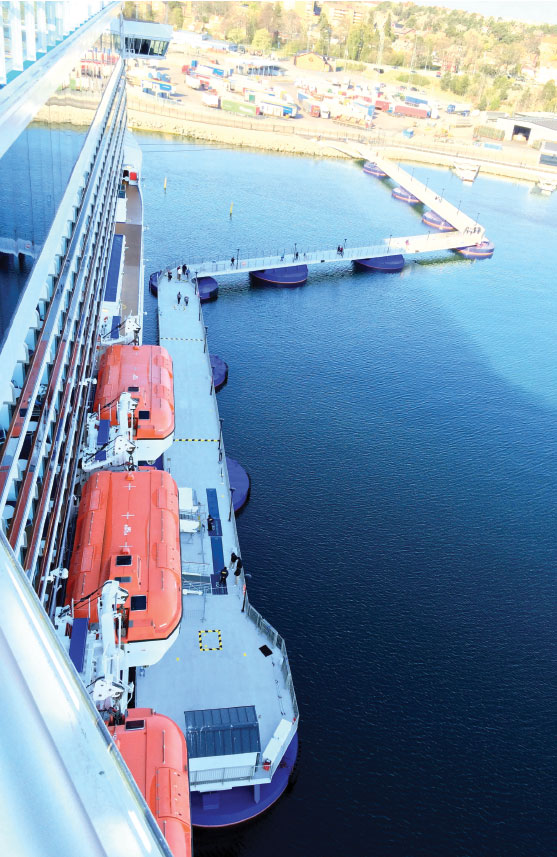 The country signed a US$8 million deal with SeaWalk for the installation of the 750-foot floating pier – the first of its kind in Jamaica and Americas – now expected to be commissioned early next year (2019). Indeed, the Port Royal contract is the first outside of Scandinavia. It will be manufactured in Europe and shipped to Jamaica for installation later this year.
The country signed a US$8 million deal with SeaWalk for the installation of the 750-foot floating pier – the first of its kind in Jamaica and Americas – now expected to be commissioned early next year (2019). Indeed, the Port Royal contract is the first outside of Scandinavia. It will be manufactured in Europe and shipped to Jamaica for installation later this year.
SeaWalk developed the floating pier for the relatively flat waters of the Norwegian fjords. However, the company reaffirms “The weather in the Norwegian fjords doesn’t compare to the rough and extreme weather the installation actually can endure.”
The floating pier design is based on engineering used in the North Sea oil industry. The first was installed at Skjolden in 2012, but has since been removed because the little town on the longest fjord in Norway closed its cruise business. There are fewer than five in operation and all together they have received a total of less than 400 vessel calls.
The pier is essentially a 3-segment pedestrian walkway set on pontoons and connected at moveable joints. The joints allow the sections to be extended to make a path to the ship; or retracted to fold against the shoreline when not in use. It is moved into position by the motorised steering unit at the farthest end of the structure which is driven by 360o rotatable propeller.
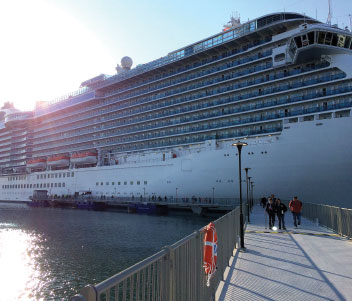 The installation and operation of a floating pier is as friendly to the environment as can be achieved simply because it creates minimum stress and has an all-but-invisible environmental footprint. It floats so there is no need to drive piles and undertake dredging and other radical underwater activities that ultimately destroy or displace myriad species; despoil the environment and destabilize the existing ecology. Minimal impact on the environment is its main selling point and, for this reason mainly, SeaWalk could be a boon for a number of Caribbean countries where geography and economics conspire to create barriers to sustainable cruise port development.
The installation and operation of a floating pier is as friendly to the environment as can be achieved simply because it creates minimum stress and has an all-but-invisible environmental footprint. It floats so there is no need to drive piles and undertake dredging and other radical underwater activities that ultimately destroy or displace myriad species; despoil the environment and destabilize the existing ecology. Minimal impact on the environment is its main selling point and, for this reason mainly, SeaWalk could be a boon for a number of Caribbean countries where geography and economics conspire to create barriers to sustainable cruise port development.
“SeaWalk is removable, reusable and requires minimal space to install,” the company claims.
This message should sound like music to many ports authority in the Caribbean.
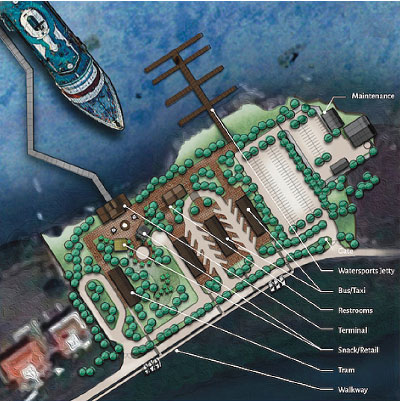 Although SeaWalk is a three-segment pier capable of accommodating more than 2,000 passengers per hour disembarking from a single shipPort Royal is today a tiny township and does not have the physical capacity on shore to sustain high volume cruise business. And, with the sunken archeological treasures dating back to the 17th Century buried just below the surface, the town once regarded as ‘the wickedest city in the Western Hemisphere’ is well-advised to maintain Port Royal as a low volume tourist destination. It will not therefwore handle more than one ship alongside at any given time, as does Jamaica’s main destinations in Montego Bay, Falmouth and Ocho Rios. However, it does provide a gateway to Jamaica’s capital city and access to the South Eastern quadrant of one of the Caribbean’s most beautiful countries.
Although SeaWalk is a three-segment pier capable of accommodating more than 2,000 passengers per hour disembarking from a single shipPort Royal is today a tiny township and does not have the physical capacity on shore to sustain high volume cruise business. And, with the sunken archeological treasures dating back to the 17th Century buried just below the surface, the town once regarded as ‘the wickedest city in the Western Hemisphere’ is well-advised to maintain Port Royal as a low volume tourist destination. It will not therefwore handle more than one ship alongside at any given time, as does Jamaica’s main destinations in Montego Bay, Falmouth and Ocho Rios. However, it does provide a gateway to Jamaica’s capital city and access to the South Eastern quadrant of one of the Caribbean’s most beautiful countries.
Meanwhile, upgrading of other Jamaican cruise ports continue apace. Dredging in the port of Falmouth to remove 140,000m3 of material to 11.6 metres depth will allow expansion at the East Berth. When completed, Falmouth will be able to accommodate two Oasis-class vessels at a time. Attendant projects at Falmouth include infrastructure improvements (i.e. roads and pedestrian paths) and new markets.
On-going works in Ocho Rios on the transformation of the Reynold’s Pier will this year be completed. And plans for Montego Bay, which has been attracting European cruise lines for homeporting, include creation of a second cruise terminal following relocation of cargo operations.
